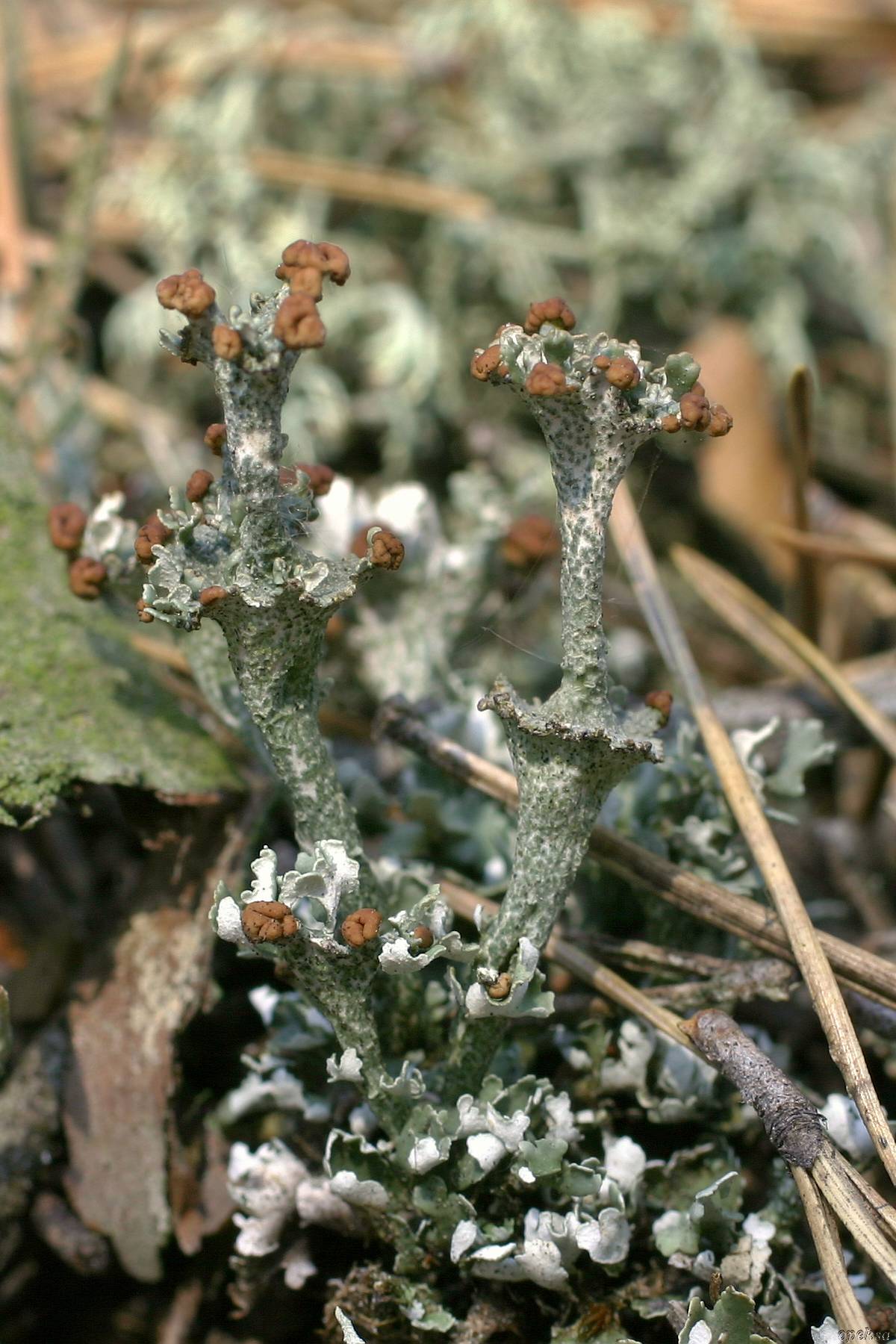Cladonia verticillata is conspicuous due to its stacked podetia, which might even be multi-level. The upper scyphus always grows from the centre of the lower one. The main distinguishing feature from the similar C. cervicornis, which may also form multi-level podetia, are the persistent primary squamules. According to van Herk & Aptroot (2003), the primary squamules of C. verticillata are smaller, more or less rounded (never oblong), with entire margin or shallowly incised, not erect when dry and with bluish tinge when wet. However, both species are morphologically very variable and difficult to distinguish. So, certain records are included in C. cervicornis agg. in this atlas. According to some identification keys and practical experience, the two taxa are identified based on predominant stacked podetia (C. verticillata) and conspicuous crispy upcurled squamules (C. cervicornis).
The species occurs on acidic and sandy soil, e.g., on heathlands, sandbanks, in acidophilous pine and oak forests and even in anthropogenic habitats. In Europe, it is more abundant mainly in the northern part. In the Czech Republic, C. verticillata is scattered in Bohemia, less common in Moravia. It may be locally abundant in areas with sandy soil.
Literature: Van Herk C. M. & Aptroot A. (2003): A new status for the Western European taxa of the Cladonia cervicornis group. – Bibliotheca Lichenologica 86: 193–203.
taxonomic classification:Ascomycota → Lecanoromycetes → Lecanorales → Cladoniaceae → Cladonia
Red List (Liška & Palice 2010):NT – near threatened
Occurrence in the Czech Republic
All records: 164, confirmed 100. One click on a selected square displays particular record(s), including their source(s).

